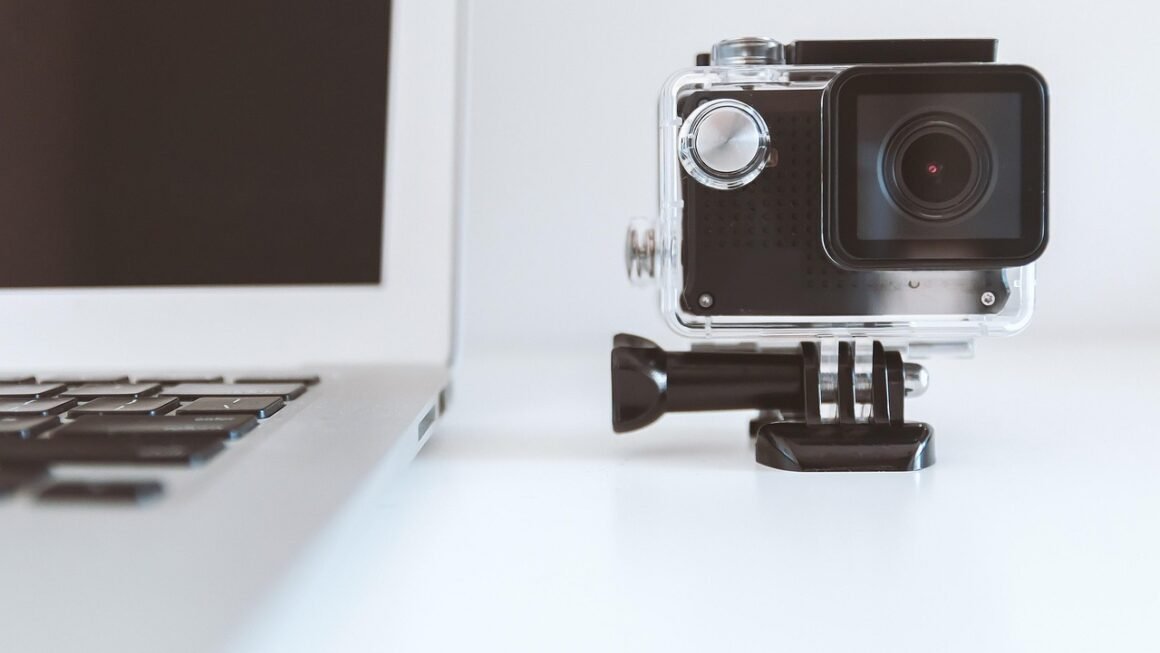Augmented Reality (AR) and Virtual Reality (VR) are no longer futuristic concepts confined to science fiction movies. They’re transforming industries, reshaping how we interact with information and the world around us, and creating entirely new experiences. From immersive gaming and training simulations to revolutionary healthcare applications and enhanced shopping experiences, AR and VR are poised to become integral parts of our lives. This article explores the core concepts of AR/VR, delves into their diverse applications, and examines the future trends driving their evolution.
Understanding Augmented Reality (AR)
What is Augmented Reality?
Augmented Reality enhances the real world by overlaying digital information onto it. Unlike VR, which creates entirely synthetic environments, AR uses devices like smartphones, tablets, and specialized headsets to project computer-generated images, text, and videos onto our view of the physical world. This technology allows users to interact with both the real and virtual elements simultaneously.
- Key Characteristics of AR:
Combines real and virtual worlds.
Interactive in real-time.
Runs in 3D.
Requires a device (smartphone, tablet, or AR headset).
How AR Works: Core Technologies
Several core technologies enable AR to function effectively. These include:
- Computer Vision: Enables the device to “see” and understand the surrounding environment by analyzing images and videos captured by the camera.
- Sensor Fusion: Combines data from various sensors (e.g., GPS, accelerometer, gyroscope) to determine the device’s position and orientation in space.
- Display Technologies: Projects the virtual elements onto the real world, using techniques like optical projection, video see-through, or holographic displays.
- Tracking and Registration: Ensures that the virtual elements are accurately aligned and anchored to specific locations in the real world. This is crucial for creating a believable and immersive experience.
Practical Examples of AR in Action
AR applications are diverse and impactful across numerous sectors:
- Retail: Try-on apps that allow customers to virtually see how clothes or makeup will look on them before purchasing. IKEA Place allows users to virtually place furniture in their homes to see how it fits.
- Gaming: Popular AR games like Pokémon GO, which overlays virtual creatures onto the real world for players to capture.
- Education: Interactive learning experiences that bring textbooks to life with 3D models and animations. For example, anatomy apps that allow students to explore the human body in detail.
- Healthcare: Surgical navigation systems that guide surgeons during complex procedures, improving accuracy and reducing risks. AR can also be used for patient education, helping them understand medical conditions and treatments.
- Manufacturing: AR-powered tools that provide technicians with real-time instructions and guidance for assembling and repairing equipment. Augmented reality can show schematics superimposed on the actual equipment.
Exploring Virtual Reality (VR)
Defining Virtual Reality
Virtual Reality (VR) is an immersive technology that replaces the real world with a completely simulated, computer-generated environment. Users interact with this virtual world through VR headsets and controllers, which track their movements and translate them into actions within the virtual environment. VR aims to create a sense of presence, making users feel as though they are actually in the simulated world.
- Key Characteristics of VR:
Completely immersive and replaces the real world.
Interactive and responsive to user actions.
Creates a sense of presence.
Requires a VR headset and potentially controllers.
The Mechanics of VR Technology
VR systems rely on several key components to create immersive experiences:
- Head-Mounted Displays (HMDs): The primary interface for VR, providing a stereoscopic display that creates the illusion of depth and immersion. HMDs also incorporate head tracking sensors to adjust the view based on the user’s movements.
- Controllers: Allow users to interact with objects and navigate within the virtual environment. Controllers often feature buttons, triggers, and trackpads for precise control.
- Tracking Systems: Monitor the user’s position and movements in real space, ensuring that their actions are accurately translated into the virtual world. Common tracking methods include inside-out tracking (using cameras on the headset) and outside-in tracking (using external sensors).
- Audio: 3D spatial audio is critical for creating a convincing VR experience. This type of audio changes in relation to the users movements in VR.
Real-World Applications of VR
VR is transforming various industries and creating exciting new possibilities:
- Gaming: Highly immersive gaming experiences that place players directly in the heart of the action. Games like Beat Saber and Half-Life: Alyx have revolutionized the gaming landscape.
- Training and Simulation: Realistic training simulations for pilots, surgeons, soldiers, and other professionals, allowing them to practice critical skills in a safe and controlled environment. VR is used to simulate dangerous environments.
- Entertainment: VR movies, concerts, and interactive stories that offer a unique and engaging entertainment experience. VR can be used to create unique experiences like space walks or exploring historical monuments.
- Real Estate: Virtual tours of properties that allow potential buyers to explore homes remotely, saving time and resources. This is increasingly important for out-of-state buyers.
- Therapy and Rehabilitation: VR-based therapies for treating phobias, anxiety disorders, and PTSD. VR is also used for physical rehabilitation, helping patients regain motor skills and coordination.
The Convergence of AR and VR: Mixed Reality (MR)
Understanding Mixed Reality
Mixed Reality (MR) combines elements of both AR and VR, creating environments where real-world and digital objects coexist and interact in real-time. In MR, users can interact with both physical and virtual objects, and digital objects are anchored to the real world with high precision.
- Key Characteristics of MR:
Blends real and virtual worlds.
Allows interaction with both real and virtual objects.
Virtual objects are anchored to the real world.
Requires advanced sensors and processing power.
Examples of MR in Practice
MR is rapidly gaining traction in various sectors:
- Design and Engineering: Designers and engineers can use MR to visualize 3D models of products in real space, allowing them to evaluate designs and identify potential issues early in the development process.
- Manufacturing: MR-powered tools that guide workers through complex assembly tasks, reducing errors and improving efficiency. MR enables “digital twins” of products that can be evaluated and tested.
- Healthcare: MR applications that allow surgeons to visualize patient data and anatomical structures during surgery, improving precision and outcomes.
- Remote Collaboration: MR platforms that enable remote teams to collaborate on projects as if they were in the same room, using virtual whiteboards and 3D models.
- Training: Allows trainees to interact with virtual tools and equipment in a real-world environment, providing a more realistic and engaging learning experience.
Future Trends in AR/VR
Technological Advancements
Several technological advancements are driving the future of AR/VR:
- 5G Connectivity: Faster and more reliable wireless connectivity will enable more seamless and immersive AR/VR experiences, particularly for mobile applications.
- Improved Display Technologies: Higher resolution displays, wider fields of view, and lighter, more comfortable headsets will enhance the visual fidelity and user comfort of AR/VR devices.
- Advanced Sensors and Tracking: More accurate and responsive sensors and tracking systems will enable more natural and intuitive interactions with virtual environments. Eye tracking technology is also on the rise.
- Artificial Intelligence (AI): AI is playing an increasingly important role in AR/VR, enabling more intelligent and adaptive experiences. For example, AI can be used to generate realistic virtual environments, personalize user experiences, and provide intelligent assistance.
- Cloud Computing: Cloud-based AR/VR platforms will allow users to access and stream high-quality content and experiences from anywhere, reducing the need for expensive hardware.
Social and Economic Impacts
AR/VR is poised to have a profound impact on society and the economy:
- Education: AR/VR will transform education by providing more engaging and immersive learning experiences, making it easier for students to grasp complex concepts and develop critical skills.
- Healthcare: AR/VR will revolutionize healthcare by improving diagnostics, treatments, and rehabilitation, leading to better patient outcomes.
- Entertainment: AR/VR will redefine entertainment by offering new and immersive ways to experience games, movies, concerts, and other forms of entertainment.
- Business and Commerce: AR/VR will transform the way businesses operate by improving productivity, collaboration, and customer engagement.
- Social Interaction: AR/VR has the potential to connect people in new and meaningful ways, fostering social connections and collaboration across geographical boundaries. However, potential downsides to increased isolation should be considered.
Conclusion
Augmented Reality and Virtual Reality are rapidly evolving technologies with the potential to transform numerous aspects of our lives. From enhancing shopping experiences to revolutionizing healthcare and education, AR/VR offers a wide range of applications that are already making a significant impact. As technology continues to advance, we can expect to see even more innovative and transformative uses for AR/VR in the years to come. Staying informed about the latest developments and exploring the possibilities that AR/VR offers is essential for individuals and organizations alike, as these technologies promise to shape the future of how we interact with the world and each other.



